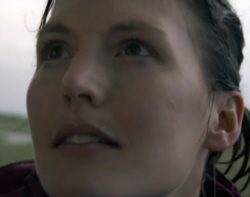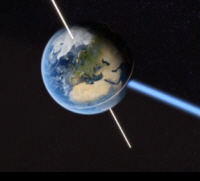The Midnight Sun
The Endless Andoyan Day

Dr Helen Czerski
'I'm Dr Helen Czerski and I study the physics of the natural world.' 'I'll be investigating how our orbit powers the most spectacular weather and, also, how it's shaped and reshaped our planet'
We'll experience, first hand the planet's most powerful forces. We're going to dive to the deepest depths and we'll reach for the greatest heights. All to bring you the story of our planet's voyage around the sun.
The Earth takes just over 365 days to make one complete orbit around the sun. In that time it travels 940 million kilometres. For one year we've been following that epic journey, every step of the way.
We're going to begin on the island of Andoya, just off the northwest coast of Norway. It's July 24th, and I'm here to enjoy a landmark in our journey around the sun.
Back in late May, the sun rose here and since then it's never set. This is known as the midnight sun. It's risen and fallen in an arc above the horizon for the last nine weeks, but it's never dipped below it.
Today, all that is about to change. The sun is going to set below the horizon completely, for the first time in 64 days. The midnight sun exists because of a special feature of Earth's orbit. As Earth travels around the sun, it doesn't spin upright. It spins around an axis that's tilted by just over 23 degrees.

Earth's Tilt
That means that in June, The northern hemisphere is facing the sun to its fullest extent. So, despite the Earth's rotation, all the land north of the Arctic Circle is bathed in sunlight all day and all night.
But as the year progresses the northern hemisphere begins to point away from the sun and periods of darkness gradually return to the Arctic. By the end of December, Andoya will be dark around the clock.
The cycle of sunset & sunrise is also a reminder that the Earth isn't just moving around the sun. It's also spinning on its axis. Every 24 hours, the Earth makes one complete rotation. As it does day gives way to night.
But, the Earth's spin controls far more than the cycle of day and night. As we'll see over the next five months, it plays a central role in creating some of the most dramatic natural phenemena on Earth.
To understand how the Earth's spin can have so much influence, we need to explore the place where it has its greatest impact. The atmosphere. The spin of the Earth has a crucial influence on our atmosphere. To find out why spin is so important, we're going on a 25,000 metre journey up into the sky.
